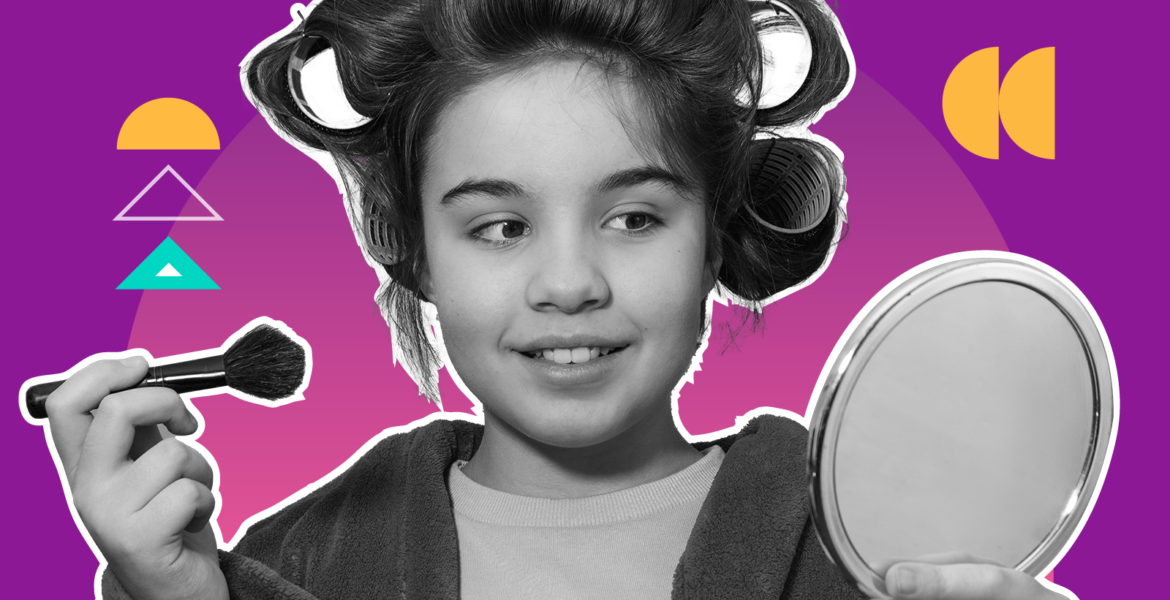By Katie Tobin, Archer, VP of strategy and insights
While giving me a tutorial on her exponentially expanding collection of skincare products, my nine-year-old niece informed me that she needs to start using Alpha Hydroxy Acid on her face. She now officially qualifies as a Sephora Tween.
Sephora Tweens are typically ages 9 to 12 and known for being more aware of beauty trends than previous generations. They are avid consumers of beauty and skincare products and frequently shop at Sephora.
Uproar about this trend has erupted. Dermatologists are sounding the alarm about the damage adult exfoliating acids do to young skin. Cultural commentators decry the unrealistic beauty standards society’s imposing upon even younger girls.
But is some of this coverage glossing over a deeper insight for brands to act upon?
The Sephora Tweens’ accumulation of skincare products and the time devoted to learning about and experimenting with them together in-person, could be motivated by the fundamental human impulse to connect over shared interests in-person.
According to interviews on the Glossy Beauty podcast with 4th to 7th grade girls, they get together with their friends to have “makeup” parties where they do each other’s makeup and share skincare routines.
These parties are not about getting “done up” to go out or taking pictures of the results. Instead, they’re about enjoying a social activity with fellow beauty enthusiasts IRL and bonding over it.
An NPR reporter met with multiple Sephora Tweens and their mothers to explore this trend. A 10-year-old’s mom said she suspects that her daughter “is interested in the collecting aspect of the hobby. ‘I want her to feel included with her group of friends.’”
Brands Fostering IRL Community
Sephora, Lululemon, Selleb and Tecovas are examples of brands that incorporate the human impulse to connect in-person into their marketing.
Sephora is now taking an organic behavior – tweens’ makeup parties – and anchoring it further to the brand by hosting tweens’ birthday parties at its stores. At these IRL events, guests enjoy makeup tutorials, scavenger hunts and product discovery.
Lululemon methodically facilitates in-person bonding among its customers across the fandom spectrum. Local stores host free in-store group workout classes so that fellow fitness enthusiasts connect IRL.
The brand Selleb is yet another proof point underscoring the importance of in-person social events among the like-minded to build a brand.
Selleb is a product discovery platform using receipts to connect users with similar fashion taste profiles.
Although still in beta, it continually attracts and onboards beta users.
In an interview on the Afterschool with Casey Lewis podcast, Selleb’s founders revealed one tactic the brand will use to accelerate growth:
“We’ll curate groups of people and host in-person activations. At these events, you’re bringing together a group of people who share interests and a lot to converse over. That’s a powerful experience because the online equivalent of that is interacting with people on Reddit or similar channels in a way that feels removed and anonymous.”
“Because we’re perpetually online as a world, it helps to get people in the same room physically sharing that experience.”
The Western wear brand Tecovas also exemplifies this tactic. Initially a DTC brand, Tecovas built its online community first, and once it opened physical retail locations, started hosting in-person Sip & Shop events for their brand fans and prospects. These events further build – both in number and loyalty – its customer base.
How Brands Can Build Upon This Insight
One of COVID-19’s lingering “gifts” is the loneliness epidemic. Brands do have a role to play here. A powerful brand helps fill a social need and, in this case, be part of the solution to this widespread loneliness.
Here’s how brands can help provide a solution – and grow in the process: Cultivate a culture of connection among your target audiences by creating opportunities to do so in-person.
Consumers crave to connect face-to-face, not just within online communities. Sephora, Lululemon, Selleb and Tecovas are standout examples of brands tapping into this human impulse.
This IRL gathering behavior doesn’t need to be occurring organically or be part of an initial marketing plan for brands to use this tactic of transforming a human need into brand building.
The playbook for this tactic is clear:
STEP 1: Pinpoint where your target audiences are gathering, likely online.
STEP 2: Discover which similar interests are bringing them together into a shared interest tribe.
STEP 3: Host an in-person event where these like-minded can connect face-to-face and experience your brand together.







